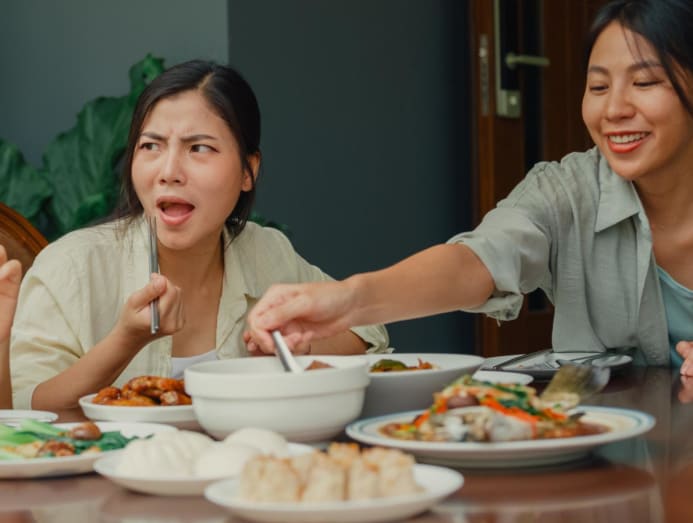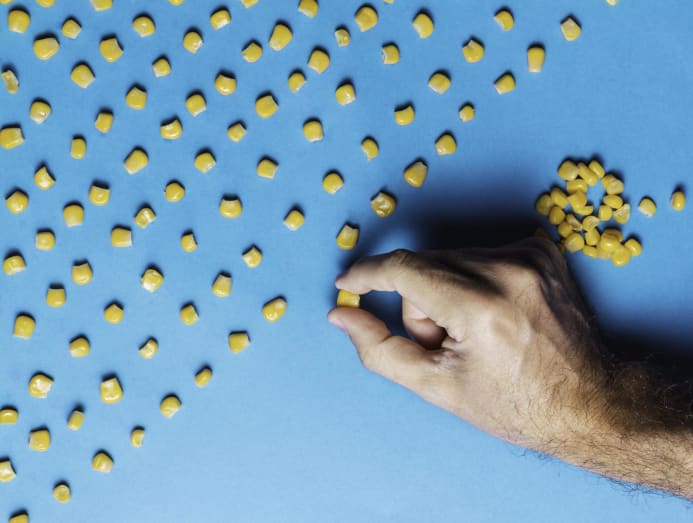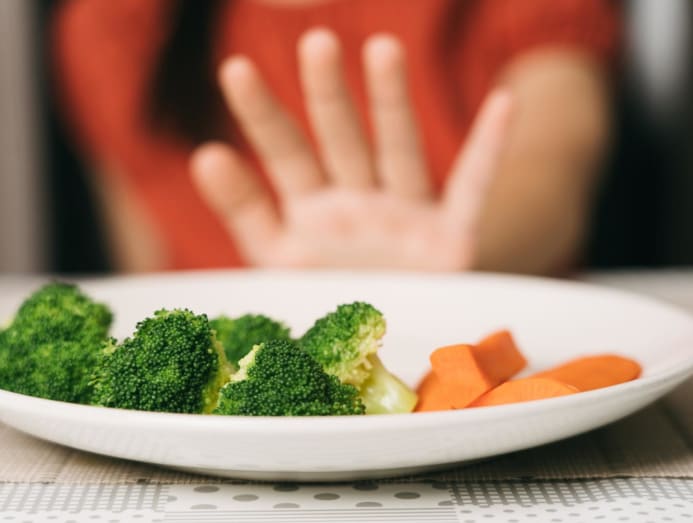Can’t stand the different foods on your plate touching each other? There might be a name for that
Some individuals experience discomfort when foods touch on their plate, a behaviour linked to sensory sensitivities. This rare condition is known as brumotactillophobia. Read on to find out more.

(Photo: iStock/Riz Visual)

This audio is generated by an AI tool.
We don’t blame you for feeling slightly vulnerable when you’re eating out with people you hardly know. Whether you’re a loud chewer, soup slurper or double dipper, your manners and habits are all laid bare on the table for your dining companions to see and hear. Including some that others might think of as unusual – like separating the components of even the simplest dishes.
A co-worker once shared how she would painstakingly compartmentalise each ingredient. "Even if the ingredients are cooked together, like prawn aglio olio, I will start by pushing the prawns aside," she said. "I seldom order from places like Stuff'd because the ingredients and sauces are all over each other."
And it's a peculiar habit that's not as uncommon as you might think. In a previous interview with CNA, Jasmin Lau, the newly appointed Minister of State with the Ministry of Digital Development and Information, and the Ministry of Education, revealed: “When I eat, I deconstruct my food."
For instance, when having a burger, she would eat the bun, patty and vegetables separately. “When I buy cai png, I will tell the aunty, do not pile the dishes on top of each other because I need to eat them separately. The worst is sushi. It’s actually a crime against sushi chefs when they put the fish on top of the rice and then I deconstruct it. But that’s how I eat,” she said.

Drenching food with gravy is another no-no. "I hated doing that because I find it gross, even if it doesn’t taste bad," said a Reddit user. "I still remember having to chew and swallow rice that was absolutely drenched in a whole bunch of juices and it was so gross.”
But where does this dislike of food-touching-other-food come from? Is it just a fussy eating habit as children that some carry into adulthood or something else?
IS THIS JUST AN EXAMPLE OF FUSSY EATING HABITS?
Turns out, it could be an actual food phobia with a name: Brumotactillophobia. Affected individuals may find it unbearable to have different foods touching each other on their plate.
"It is likely that cases are very rare," said Dr Lim Boon Leng, a psychiatrist with Gleneagles Hospital. “Brumotactillophobia is not officially recognised in diagnostic manuals like the DSM-5, and thus, specific prevalence data in Singapore is lacking. Likely due to its rarity or that sufferers do not seek treatment, I have not seen brumotactillophobia per se,” he said.
Dr Lim noted that the cause of brumotactillophobia is unknown. However, “fussy eaters almost never evolve to have brumotactillophobia”, he added.

Not all individuals with food separation preferences have an underlying clinical condition.
What is known is that affected individuals often display “heightened sensitivity to sensory stimuli, a preference for routine and discomfort with changes in their environment”.
“These traits are commonly observed in individuals with neurodevelopmental conditions such as autism spectrum disorder or obsessive-compulsive disorder (OCD)”. “There have been a few cases of patients with OCD that I have seen with similar behaviour,” he said.
But Dr Lim emphasised that not all individuals with food separation preferences have an underlying clinical condition.
WHY THE NEED TO SEPARATE FOOD?
Autistic individuals tend to have a higher prevalence of brumotactillophobia as they can be hypersensitive to stimuli. And when it comes to food, certain tastes, textures or colours can be intensely stimulating for them, according to The ADHD & Autism Clinic in the UK. For instance, they tend to eschew fruits and vegetables such as bananas and mushrooms, and prefer processed and bland carbohydrates.
As much as 90 per cent of children with autism show food separating patterns; and the strong preference doesn’t diminish with age. In fact, they may grow into adults with deeper-ingrained aversions due to lifelong patterns of selective eating, according to The ADHD & Autism Clinic.

As autistic writer Devrupa Rakshit wrote on The Swaddle, keeping her food compartmentalised lets her regulate the flavours in each bite and prevent her senses from being overwhelmed. “The rationale is the same for textures, too. I’d want to make sure I am the one dipping my momos in chutney because, otherwise, a happy meal can quickly turn into a sensory nightmare for me.”
ARE THERE DEGREES OF BRUMOTACTILLOPHOBIA?
Yes, it can manifest in varying degrees of severity, said Dr Lim. “In mild cases, individuals may simply prefer foods to be separated without significant distress. They are still in control and may be able to resist the urge to separate the food.”
However, “in more severe instances, the aversion can lead to anxiety, avoidance of social situations involving food, and interference with daily functioning”.
“When such behaviours are driven by intrusive thoughts and compulsions, they may be indicative of OCD,” said Dr Lim.

SHOULD YOU SEEK HELP?
Do so when your aversion causes significant distress, impairs social interactions, or leads to nutritional deficiencies, said Dr Lim.
Treatments may include:
- Cognitive-behavioural therapy (CBT): Talking through your thought patterns and behaviours with an expert.
- Exposure and response prevention: A form of CBT that involves gradual exposure to feared situations such as introducing a new food in your diet.
- Medications: In cases where OCD is diagnosed, medications such as selective serotonin reuptake inhibitors may be prescribed, said Dr Lim.






